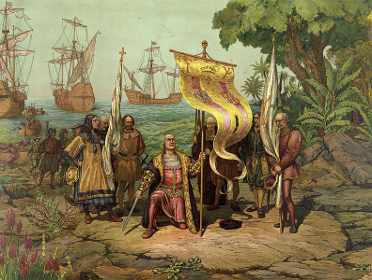Discovery of America by Christopher Columbus - A Lucky Coincidence

Table of Contents
- Why the Portuguese were Right and Columbus was Wrong
- The Main Problem with the Columbus' Theory and the Reaction of the Spanish Court
- Columbus' Delusion About Reaching Asia
Quick Facts
The Portuguese did not reject Columbus' theory about a westward route to Asia due to the flat Earth theory but because they believed that he was very wrong about the distance between Europe and Asia.
Columbus estimated that Asia is 2,400 nautical miles from Europe across the Atlantic Ocean (in reality it is more than 10,000 miles).
Columbus was not given the three ships – Nina, Pinta and Santa Maria by the Spanish court for 7 years.
Columbus' discovery of America was a lucky coincidence which saved his and his crew's life considering his miscalculation of the distance of Asia.
The discovery of America by Christopher Columbus is considered one of the most important events in world history. The Genoese navigator and explorer was not the first European to reach the New World, however, his obsession with the westward route to Asia was a major turning point in European, American and African history. Interestingly, his discovery was in reality a lucky coincidence.
Why the Portuguese were Right and Columbus was Wrong
Columbus was given the three famous ships – Nina, Pinta and Santa Maria by which he reached America by the Spanish monarchs Isabella I of Castile and Ferdinand of Aragon. However, he initially tried to win the support for his voyage at the Portuguese court. At the time, the flat Earth theory did not have as much support as often mistakenly believed and the Portuguese did not reject Columbus’ theory because they would believe that the Earth is flat. The Portuguese were convinced that Columbus had seriously miscalculated the distance of Asia and they were right. The celebrated navigator was indeed very wrong. In fact, he and his crew would probably end tragically if there would not be the Americas.
The Main Problem with the Columbus’ Theory and the Reaction of the Spanish Court
Christopher Columbus was by no means an incompetent navigator but the Portuguese court actually made the right decision by rejecting to support his voyage because he had proposed an impossible plan. He claimed that he would need to travel 2,400 nautical miles to reach Asia by crossing the Atlantic Ocean which is one fourth of the actual distance (more than 10,000 miles). His theory was not any less convincing to the Spanish monarchs and a result, he did not managed to gain the support at the Spanish court immediately either. He waited for 7 years before he was finally given the three ships, allegedly after Ferdinand of Aragon persuaded his wife to support the Columbus’ idea.
Columbus’ Delusion About Reaching Asia
The celebrated navigator and explorer died without being aware how lucky he was to spot land on October 7, 1492, after only 29 of sailing. Although Columbus made total four voyages to the Americas, he rejected the idea of discovering a yet unknown world and believed he had reached Asia until his death. Ironically, one of the most important events in world history which is by some historians used to mark the end of the Middle Ages and the beginning of Modern history was in reality a pure luck.




